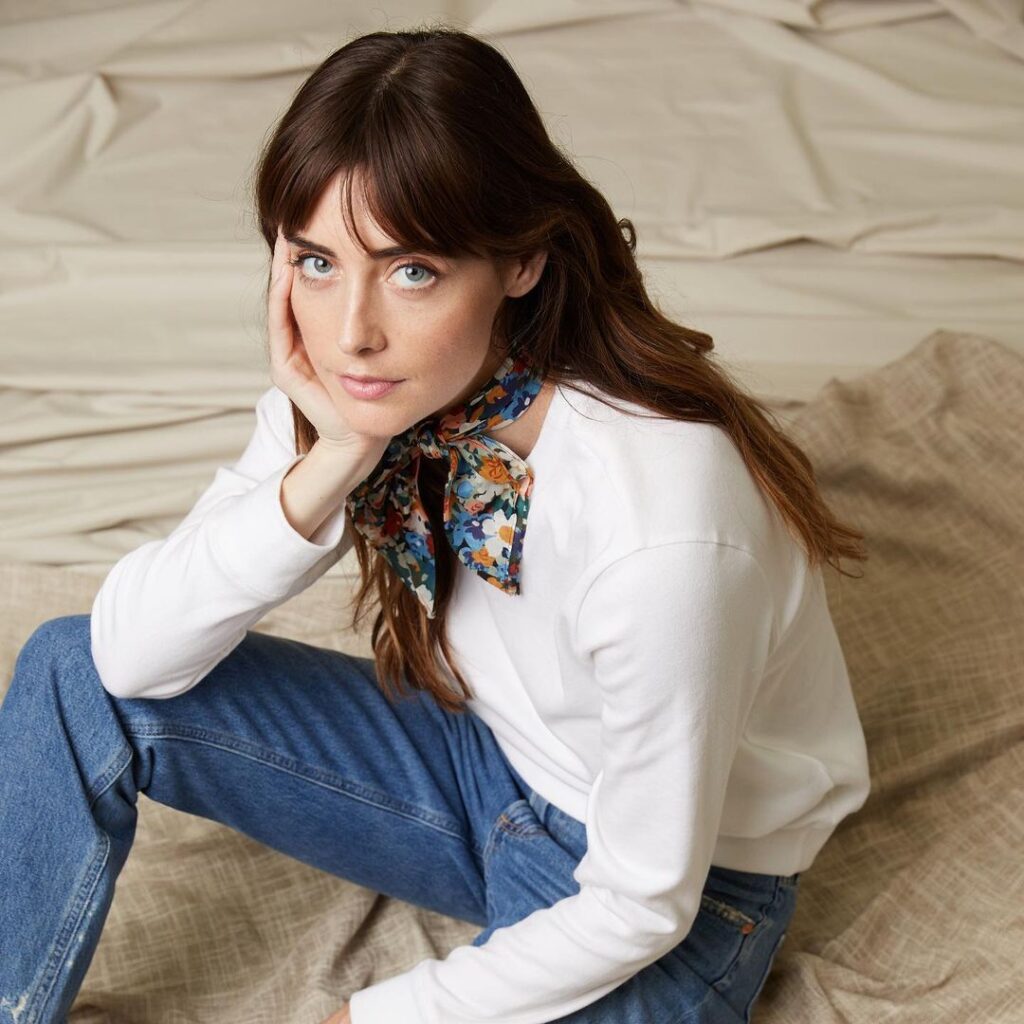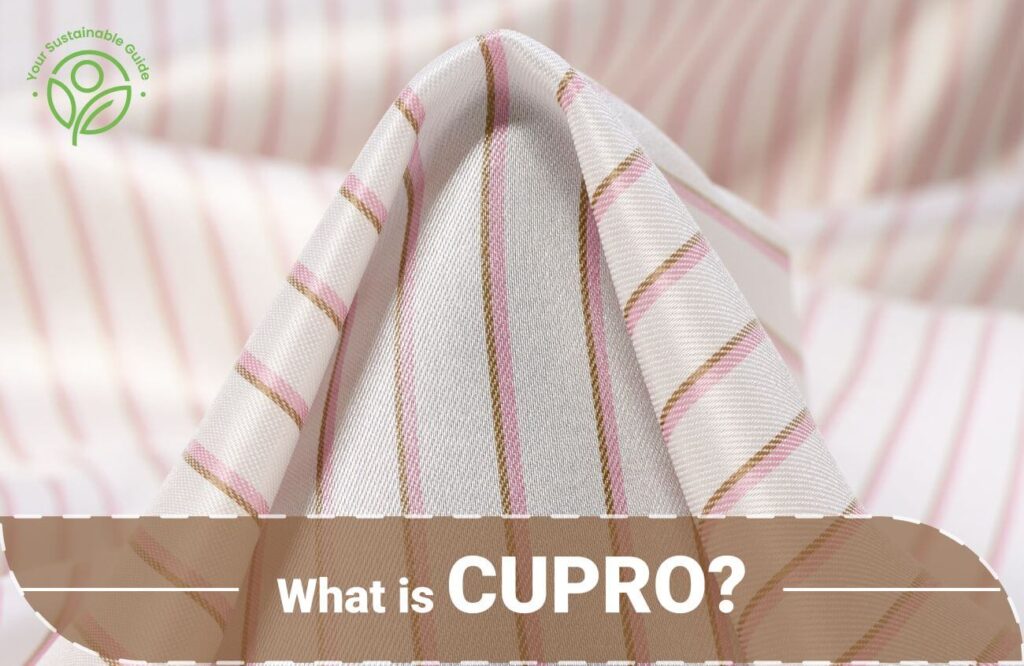For a conscious shopper, purchasing an outfit is more than just making a vague fashion statement.
So what’s it with all these sustainable fabrics? Well, bamboo, linen, modal fabric, hemp, organic cotton, etc, all fall under various sustainable fabrics. Made from eco-friendly resources like recycled or natural materials, the primary goal of sustainable fabrics is to reduce the level of toxic fiber properties, harmful manufacturing processes, and carbon footprint across the board.
With an estimated 7.7% of textile waste in landfills annually, it’s high time to check a clothing label’s fine print and opt for sustainable fabrics to put a compassionate shopper’s mind at ease. How cool is that?
While there’s an array of sustainable fabrics to check out from. Let’s focus on the popular modal fabric today. Lightweight and breathable, the modal fabric is currently taking the clothing industry by storm. Made of beech tree pulp, the modal fabric is a type of rayon that is 100% biodegradable, doesn’t shrink after washing, and doesn’t pill or crease despite repetitive use.
However perfect it sounds, it may or may not be the best eco-friendly material. So, let’s delve deeper to find out if modal is sustainable for real. Is modal indeed a ‘dreamy fabric’ as it is claimed to be?
What is Modal Fabric?

Developed in 1951 in Japan, modal is a semi-synthetic fabric produced primarily from beech tree pulp. Also known as HWM (High-wet-modulus) rayon, the modal fabric is a combination of organic and synthetic materials and is widely used in consumer textiles. The natural base material used for modal production remains to be hardwood tree cellulose from oak or beech trees, which then undergoes a complex chemical processing to get converted into weavable fiber.
Stretchable, absorbent, and soft to the feel, modal is considered a great alternative to cotton and is used in manufacturing intimate wear, activewear, home textiles, etc.
The Austrian textile giant Lenzing AG is the primary producer of modal fabric globally. The company is known for manufacturing modal for decades. Lenzing AG is based in Europe but has some of its biggest modal factories worldwide, including China. The company owns the trademark of the fabric TENCEL™ Modal( previously known as Lenzing Modal®) and is certified for sustainably sourced and manufactured modal.
Lenzing AG also manufactures lighter versions of the material, namely MicroModal and Modal Air. These modal versions are more finely knitted than regular modal making the end product softer, long-lasting, and more luxurious.
How is Modal Fabric Made?

The modal fabric is a type of viscose rayon, so the composition and the manufacturing process of the two remain similar. Considered as an updated version of viscose rayon, modal fabric production starts with harvesting beech trees. Upon maturing, these trees are broken down into tiny chips, which are purified on the manufacturing floor to extract cellulose.
Next, this woody pulp (cellulose) is molded into thin sheets that are soaked in a tank of sodium hydroxide (caustic soda.) Once the soaking process is completed, the sheets are broken into small crumbs and directly dipped in a carbon disulfide solution, which turns the crumbs into an orangy substance known as sodium cellulose xanthate. Furthermore, this substance is again soaked in carbon disulfide to achieve a syrupy solution which is then forced through tiny holes called spinnerets to create the threads.
Finally, these threads are dipped in sulfuric acid and formed into yarn through washing, bleaching, and drying, making the fibers ready to be woven into modal fabric. It is important to note that modal fabric production releases a minor amount of toxic waste as the chemicals involved in its manufacturing process are of far lesser concentrations than viscose rayon.
Is Modal Fabric Sustainable?
Yes, modal is definitely one of the most sustainable fabrics. Even though modal goes through a complex chemical processing where the cellulose sheets are soaked in a cocktail of chemicals, it is important to note that the sourcing techniques and the chemical concentrations used, especially in Lenzing Modal are far less than other synthetic materials like viscose rayon. This, in turn, results in significant waste reduction.
Modal is also Carbon Neutral, absorbs dye faster, and doesn’t bleed in the washing process. In addition, it requires less land than cotton fibers with water consumption being 20 times less than used in cotton harvesting. Modal can also absorb up to 50% more water than cotton. So despite being an artificial fabric, modal is proving to be more sustainable than some organic fabrics.
So far Lenzing AG is the certified global leader of sustainably sourced and produced modal. But a majority of modal companies are based in China, and the country has a notorious reputation for inhumane working standards and high environmental impact.
Is Modal Fabric Affordable?
No, the modal fabric is more expensive than conventional cotton and synthetic fabrics like viscose rayon, nylon, and polyester. The production cost of the fabric is quite low, but the modal fabric which is manufactured in developed countries that follow all the ethical criteria of production tends to be pricier because of fair trade practices, fair wages, and safe working conditions.
Cheap modal fabrics are often those that come from disreputable manufacturers from countries like China. These modal fabrics are produced under harmful environmental conditions and are usually of poor quality.
Modal Fabric Certifications
A modal manufacturer can seek the following certifications which are a sign of assurance that beech trees used for the production of modal were harvested sustainably.
- Program for the Endorsement of Forest Certification schemes (PEFC)
- Forest Stewardship Council (FSC) Certificate.
Properties of Modal Fabric

The fabric modal feels like a ‘dream.’
- Modal fabrics are lightweight, breathable, stretchable, and absorbent making them perfect for activewear.
- Modal fabrics have excellent heat retention abilities. No-pilling, durable, crease-free, shrink-resistant, and soft-touch features make it perfect for underwear, towels, and everyday casual clothing.
- With a thread count that can go up to 300, the fabric modal is considered quite a luxurious bedsheet fabric.
- Modal fabric drapes well and is both moth and mildew-resistant.
- The fabric modal is also quite durable. Softer, and smoother to the touch than cotton, modal is more eco-friendly.
Pros & Cons of Modal Fabric
However dreamy and sustainable it may seem, no material is scar-free. After all, artificial or natural fabrics go through steps of complex processing or harvesting that leave some level of impact on the environment.
Pros:
- Modal fabric is extremely absorbent, so you can be active throughout the day and still feel comfortable and dry.
- The soft and smooth texture of the modal fabric is almost beyond comparison to any textile available.
- The modal fabric requires less water even in laundry. No fabric softener or whitening agents are required and even a short wash cycle is enough to give you squeaky clean clothes.
- Modal fabric can be blended with other materials to improve the quality of the product.
- Modal fabric is exceptionally stable and doesn’t rip easily. And since they’re damage resistant in most cases, the colors and prints stay brighter for longer.
Cons:
- Compared to other textiles, some people may have allergic reactions to the modal fabric.
- TENCEL™ Modal is certified to be sustainable, but the other modal manufacturers, especially those in China don’t guarantee sustainable production practices.
- The modal fabric is great to be used in summer or during high activities. But doesn’t provide much comfort when the weather gets chilly, because of its low body heat retention features.
- If exposed to too much heat, your modal clothes can turn yellow.
- Despite all the goodies, modal is still a type of rayon. And rayon has a reputation for contaminating deep ocean areas at a massive scale.
Uses of Modal Fabric

- Modal fabric can be used in creating your everyday casual wear, comfortable intimate wear, and sportswear.
- With a high thread count bath and home textiles like bathrobes, towels, bed sheets, and pillowcases turn up really rich when made in modal fabric.
- Moreover, the modal fabric is also blended with other materials for a stronger, more durable outcome.
How To Care for Modal Fabric?
How to Wash Modal Fabric?
Modal fabric can be machine-washed with a mild detergent and tumble-dried easily. However, it’s always a good idea to check the garment label for specific instructions. Because modal blends may have different wash instructions altogether. Pure modal can be washed in both cold and normal temperature water.
How to Bleach Modal Fabric?
Using oxygen bleach is a better idea. Chlorine bleach should be strictly avoided as its properties weaken the modal fabric.
How to Dry Modal Fabric?
Low to medium heat is best for drying this fabric. Avoid wrinkles by removing your items from the dryer right away, or even when they’re a little damp.
Famous Brands That Use Modal Fabric
These famous brands are actively crafting their sustainable offerings in Modal for a greener footprint.
Best Alternatives to Modal Fabric
- TENCEL™ Lyocell – Similar to TENCEL™ Modal, TENCEL Lyocell is of superior quality. Produced with eucalyptus wood in a close-looped system, TENCEL Lyocell is more sustainable and durable compared to the Tencel Modal. In a nutshell, TENCEL Lyocell is the upgraded version of Tencel Modal, so it has all the qualities of modal but just a notch better.
- Organic Hemp – It is a type of cannabis plant. It is a fast-growing crop that neither needs a lot of water consumption or pesticides nor exhausts the soil. Although more expensive and less accessible, Hemp is a great alternative to the Tencel modal because unlike allergic reactions or skin sensitivities to modal in some cases, organic hemp suits everyone.
- Organic Linen – Linen fabric is made from the stems of the flax plant. These plants do not need any fertilizer and can literally thrive in harsh areas where most other crops cannot survive. Extremely breathable and absorbent with non-allergic properties, linen is an excellent alternative to modal. Reason? Well, flax plants can be used in their entirety (seeds, oil, and crop) for different purposes, making linen a no-waste fabric. In contrast, for modal production, a significant portion of the trees are discarded, resulting in resource waste. Linen is also completely biodegradable.
- Recycled Wool – Another great sustainable option because recycled wool is nothing but used woolen garments converted into something new and fresh. This method helps keep the used garments from getting dumped in landfills and saves a lot on water consumption, animal welfare, and processing requirements. A win-win for everyone and the planet.
- Recycled Cotton – Recycled cotton is an amazing way of creating garments in a circular loop. Used cotton garments or textile waste are recycled to make new pieces that not only hold the same comfort as regular cotton but also help in environmental crises. Because the production step is literally NIL.
Conclusion
The modal fabric was created keeping all the sustainability factors in mind. The intention was always to bring to the world a fabric that is not only a combination of all things perfect but also helps the environment thrive. But not all factories produce it sustainably. Our advice- The next time you go modal clothing shopping, be sure to check your clothing label to be PEFC or FSC certified, and Voila! you’ve made the best decision toward a sustainable wardrobe. Alternatively, you can check on some of the most innovative fabrics in sustainable fashion too!







